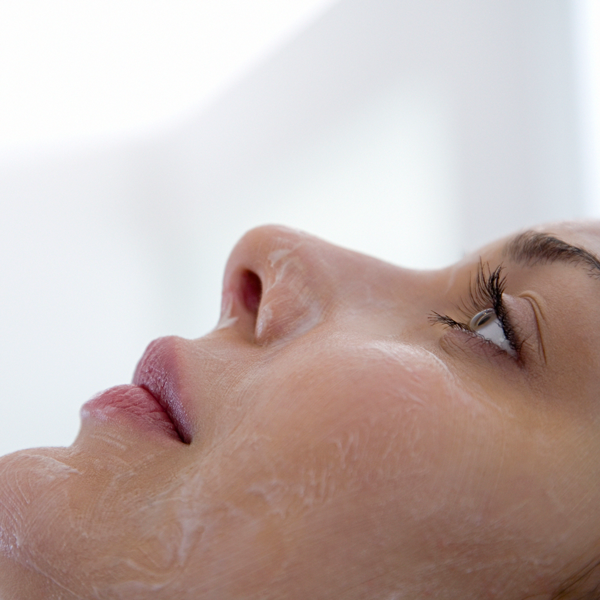
Chemical peel is a procedure that removes the top layer of skin to reveal a fresh layer and promote new skin tissue growth. There are several kinds of chemical peel procedures: superficial/light peels, medium depth peels and deep peels. During your consultation, Dr. Critelli will discuss all of the options to determine which is the best for you.
Dr. Paul Critelli, board-certified plastic surgeon, provides patients with facial rejuvenation treatments such as chemical peels. This procedure removes the top layer of skin to reveal another fresh layer and promote new skin tissue growth. It is a safe and effective way to attain a clear, softer appearance. There are different degrees of peels depending on the patient’s cosmetic goals and their skin condition prior to treatment. A chemical peel uses an acid solution to create the peeling affect; the solutions used range from mild, medium or deep. There are a number of skin problems a chemical peel can resolve, such as fine wrinkles, acne scars, pigmentation, rough textures and many more.
Types of Chemical Peels
Superficial/Light Peels
The superficial peel is the mildest peel option that targets the upper layer of skin. Commonly, a diluted glycolic acid is used and left on the skin for several minutes. The doctor will then neutralize the acid to keep the peel at a mild level. There will be slight redness after the treatment, but typically there is no downtime compared to the other peels available. On average, patients will peel for about three to five days with this treatment. Patients may need several treatments to achieve the facial look they desire. On average, this is also the least expensive among chemical peel treatments.
Medium Depth Peels
A medium chemical peel treats more than just the top layer of skin. It penetrates deeper to treat moderate to severe wrinkles and skin irregularities. The procedure uses a stronger solution in the form of Trichloreacetic Acid (TCA). The acid will be applied in a controlled condition to manage and limit penetration, and the acid will be neutralized to stop the effects of the peel up to a certain point. The recovery time following a medium peel is about 10 days and patients will need to plan ahead for a short recovery period. This peel costs more than the superficial one, but the results are a bit more dramatic.
Deeps Peels
A deep chemical peel is the most aggressive approach in chemical peel treatment. It is considered a more invasive procedure and in some cases patients will need general anesthesia. The substance normally used is called phenol and it aims to treat severe skin wrinkling, deep scars and facial irregularities. Once a patient undergoes a deep peel, it is not advised to have another one. The recovery period may take up to 14 days and the area treated will be bandaged as the wounds are comparable to second-degree burns. The results following a deep peel are usually excellent. The disadvantage to this peel is that there is downtime and it costs significantly more than a mild or medium depth peel.
During/After the Procedure
The chemical application for a peel follows similar steps. The only difference will be the type of acid solution used, the amount applied, and the period of time that it is left on the skin. Once the chemical reaches the target skin layers, a neutralizer will be applied to immediately stop the effects of the acid. Downtime depends on what kind of peel is done. There is no downtime for mild peels but for deep peels, patient will be in a healing process up to 14 days. After the treatment, it is important that the patient allow the peeling process to occur naturally and do not assist in peeling or pulling at the skin. It is also extremely important to avoid sun exposure for a period of time after the treatment.
FAQs
How painful?
Depending on the peel used, there may be some general discomfort. With the lighter peels, patients will feel some stinging but it goes away quickly with the use of a handheld fan. The peeling process itself does not cause any pain. Medium and deep peels are more painful, and thus skin medications and antibiotics may be used to assist with any discomfort.
Peel or dermabrasion?
Dermabrasion is a facial rejuvenation procedure that treats surface irregularities, giving the skin a softer appearance. Dermabrasion works in many ways similar to a chemical peel. The difference, is that dermabrasion use surgical tools (a rotating brush or shaving instrument) to remove the top layer of skin through a surgical scraping process. A chemical peel uses a caustic solution that is rubbed into the skin. Both techniques result in a brighter, smoother complexion.
Other options for me?
There are many skin treatments to consider depending on the patient’s aesthetic goals and skin condition. Chemical peels promote new skin regeneration and is best to treat skin irregularities. For facial conditions in which wrinkles are significant, a BOTOX or injectable filler may be a better option. There are also a number of laser treatments to consider as well.
